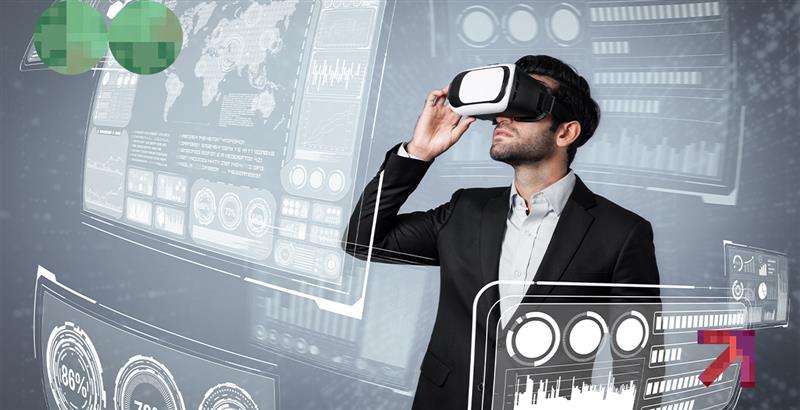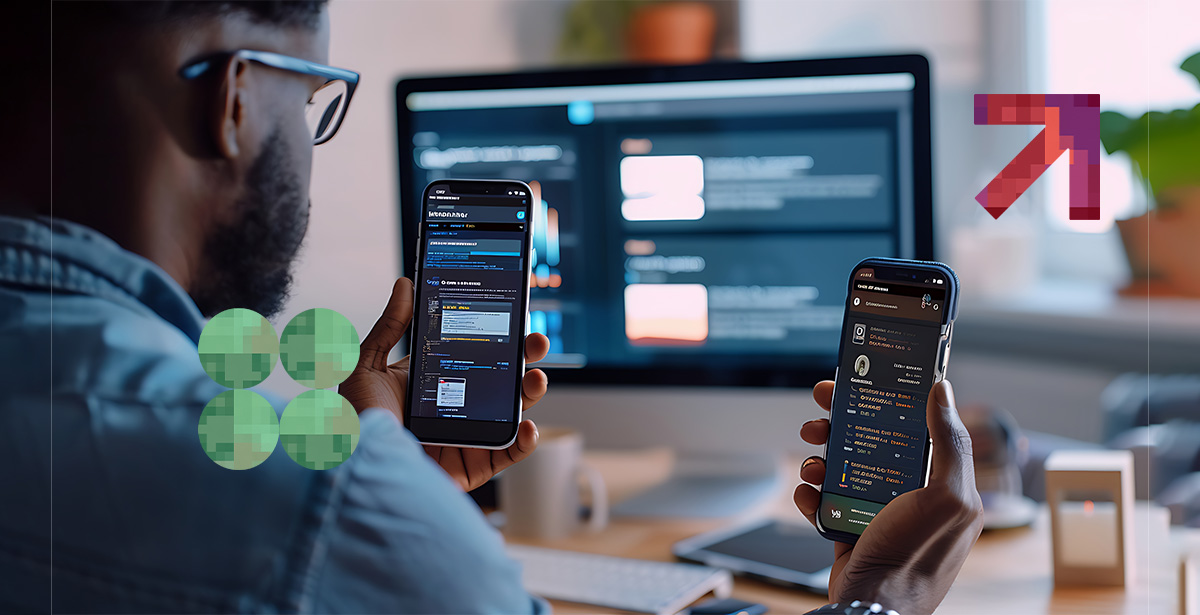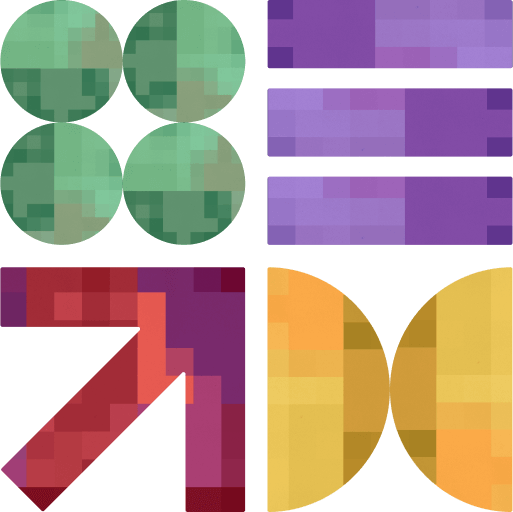5 Industries that NEED Augmented Reality Application Development

If you thought augmented reality application development was limited to viral mobile games or flashy entertainment experiences, think again.
In reality (pun intended), AR is a transformative technology that can enable businesses to reshape how they engage with data, customers, and environments.
Whether you’re a startup founder or an enterprise innovator, it’s time to take a fresh look at AR. Especially if you belong to the following five industries as you may be missing out on the next big thing to push your business forward.
💡 Need a quick recap of what AR is? You can check this augmented reality guide by TechTarget to cover the basics of this technology.]
1) Healthcare
AR isn’t an empty buzzword in the healthcare industry. It’s a promising solution that has the potential to help both working practitioners as well as medical students.
While AR adoption has been relatively slower in the past, the global AR in the healthcare market is expected to experience a CAGR of 26.3% from 2025 to 2033. So, if you wish to beat the competition and have your own AR healthcare app, now is the time to start planning.
Why Healthcare Organizations Need Augmented Reality
There’s more to augmented reality application development than just ensuring your organization stays in the lead.
Healthcare is an industry where precision, speed, and clear communication can literally save lives. With AR, you get to add a game-changing layer of innovation. One that can enhance how healthcare professionals perform procedures, deliver training, and engage with patients.
For instance, surgeons can use AR overlays to ensure accurate, minimally invasive procedures. Similarly, medical students have begun training with immersive 3D models of the human body. Even routine tasks like finding veins for injections are being simplified through AR-powered tools.
AR further brings together data, visuals, and interaction in real time. Therefore, it’s useful in bridging the gap between knowledge and practice. So, in a world where every second counts, AR truly gives healthcare institutions a critical edge.
💡 Not ready for AR just yet? You can take a step towards innovation by working on updating your current apps. For instance, you can future-proof what you have using healthcare application development tips such as designing for compliance and opting for cross-platform applications.
AR Applications for the Healthcare Industry
If you’re not sure where to start, here are some apps that leverage AR to streamline healthcare delivery and education.
- Surgical Visualization and Navigation – In such apps, AR overlays 3D models of organs, blood vessels, or tumors onto a surgeon’s field of view. While a little complex, such apps promise a lot of value as they enhance precision and reduce risk.
- Medical Training and Education – By offering AR-based training modules, students and professionals can interact with virtual anatomy, simulate procedures, and practice in risk-free environments.
- Patient Education and Treatment Planning – With these apps, physicians can explain complex diagnoses and treatment plans more effectively. They help visualize conditions or procedures directly on the patient’s body or via 3D models.
2) Education and Training
Augmented reality application development has picked up speed in the education and training sector. In fact, from 2024 to 2025, the global market grew from $31.26 billion to $51.34 billion at a CAGR of 64.3%.
Even in the Kingdom of Saudi Arabia, the education sector is actively contributing to AR’s growth at a CAGR of 24.8%.
The Saudi Ministry of Education has integrated the technology into its National Education portal platform (iEN). This helped the country immensely during the COVID-19 pandemic, ensuring schools and students received the materials they needed.
Why Educational Institutions Should Embrace Augmented Reality
The way students learn is evolving, which is why traditional teaching methods may not be enough to engage them.
AR turns passive learning into an immersive experience. By blending real-world environments with interactive digital elements, the technology brings textbooks to life. As a result, even the most complex concepts become easier to understand and retain.
From primary education to higher learning, AR can make subjects inclusive and accessible. This is possible through visual, interactive content that supports diverse learning styles.
And this benefit extends further to students with disabilities or those facing language or literacy barriers. Context-rich visuals and hands-on interactivity effectively bridge gaps in comprehension.
Educational institutions too benefit from custom AR app development. Their reputations soar as they successfully enhance learning outcomes, foster curiosity, and prepare students for the future.
AR Applications for Education and Training
If the above tempted you to contact an augmented reality application development company, here are some examples to inspire you.
- Interactive 3D Learning Models – Using lifelike 3D AR models, students can explore complex subjects like biology, physics, or astronomy.
- Virtual Field Trips – Students can ‘visit’ historical sites, ecosystems, or museums from the classroom. This spares them from traveling to places while giving them all the opportunities to explore them.
- Skill-Based Training Simulations – Fields like engineering can benefit from hands-on practice in a safe, controlled environment created via AR. This enables future practitioners to master techniques without real-world risks.
- Language Learning and Literacy Support – AR apps provide real-time translations, object labeling, and pronunciation guides. These features help different learners improve vocabulary, comprehension, and engagement.
3) Retail
Realizing its potential, retail was one of the first adopters of AR technologies.
In fact, it’s been a prominent part in the retail digital transformation journey of global businesses for over five years. That’s why countries such as Saudi Arabia are more focused on digital shoppers and cater accordingly to their shopping experiences.
Why Retailers and eCommerce Brands Need AR Solutions
The current experience-driven economy has made consumers want more than just products. They want confidence in their purchase decisions. And AR can provide that by bridging the gap between physical and digital shopping.
Augmented reality application development allows customers to visualize how an item would look on them or in their spaces in real time. This level of interactivity boosts engagement and significantly reduces return rates.
For your brand, AR also opens doors to creative storytelling and immersive product showcases. This will set you apart in a crowded marketplace. You’ll also get to enjoy higher conversions as your shoppers’ online shopping journey becomes more personal, intuitive, and fun.
AR Applications for Retailers
If you’re a retailer who’d like to explore the potential of augmented reality services, here are some types of apps you can create.
- Virtual Try-Ons – Through these AR apps, customers can try on clothing, accessories, or makeup virtually.
- Product Visualization in Real Spaces – You can opt for apps where users place furniture, decor, or appliances in their actual environment to check fit, size, and style.
- Interactive Packaging and In-Store Displays – AR-enabled packaging or displays offer extra product info, tutorials, or gamified experiences. In addition to enhancing engagement, these applications boost brand loyalty.
- AR-Powered Size and Fit Guides – You can have an app that allows users to scan their bodies or feet to find their ideal sizes and minimize guesswork.
4) Manufacturing and Engineering
Though considered a boring industry for the longest time, the manufacturing sector is gaining speed as it embraces innovation. Grand View Research expects the AR market for this sector alone to grow annually at 28.3% from 2023 to 2030.
Contributing significantly to this growth are the Asian and Asian Pacific markets. For instance, KSA’s heavy investment in this technology is expected to raise revenue in the AR market to $124.4 million in 2025.
Why the Manufacturing Sector Can’t Ignore Augmented Reality
Manufacturing is entering a new era where precision, speed, and adaptability are critical factors. With AR, manufacturers can streamline operations, reduce downtime, and empower workers with real-time information.
Manufacturers are also investing in augmented reality application development to reshape their factory floors. For instance, technicians use AR headsets to receive assembly instructions overlayed directly on equipment. Similarly, maintenance teams can visualize hidden components or access live diagnostics without flipping through manuals.
All of these transformative measures positively impact productivity, safety, and quality assurance. They further unlock smarter workflows and create a more agile, connected workforce.
💡 Start small, but start smart. You can pilot augmented reality on a high-impact bottleneck such as quality checks where even minor efficiency gains can show immediate ROI. You can then scale based on real metrics, building internal confidence and minimizing disruption.
AR Apps for Manufacturing and Engineering
If you’re excited about partnering with an augmented reality app development company for your factory, here are some ideas.
- Predictive Maintenance and Equipment Diagnostics – AR displays real-time data and alerts on equipment health. That way, technicians can detect and fix issues before breakdowns occur.
- Remote Assistance and Expert Collaboration – Using AR and live annotations, on-site workers can connect with remote experts who guide them through complex repairs.
- Training and Skill Development – AR can easily simulate real-life scenarios. This, in turn, delivers immersive hands-on training without interrupting operations.
5) Logistics and Warehousing
The global AR in the warehousing and logistics market is booming. Between 2025 and 2031, it’s expected to grow at a CAGR of 14.3%. So, unless you wish to lag behind in your industry, it’s time for you to seriously consider bringing AR to your business.
Why Logistics and Warehousing Ops Benefit from AR Integration
In addition to accuracy, speed and efficiency are non-negotiable in this sector. As supply chains grow more complex, AR has proven to be a critical tool for simplifying operations and boosting productivity.
Within warehouses, AR can help with inventory-related functions. The technology can also be used to reduce fulfillment time and transform training and onboarding.
For logistics teams, AR enables dynamic route planning, live cargo visualization, and quicker response to disruptions. Whether it’s optimizing warehouse layouts or improving last-mile delivery, AR brings clarity and control to every step of the supply chain.
💡 Want to get your next app right? Whether you’re planning an AR app or something less complex, you should learn a bit more about logistics app development beforehand. That’ll ensure you get max value and ROI.
AR Applications for Logistics and Warehousing
If you’re planning to reap the benefits of augmented reality application development, here are some app ideas to pull this off.
- AR-Guided Picking and Packing – You can combine custom AR app development with smart glasses or tablets to deliver real-time visual directions to item locations.
- Warehouse Navigation and Route Optimization – AR overlays guide workers through the most efficient paths in large or complex warehouse layouts.
- Inventory Management and Scanning – AR apps can replace handheld scanners and manual entry, identifying and scanning inventory visually.
- Training and Onboarding – New staff can undergo immersive, hands-free training using AR simulations that mirror real warehouse tasks and environments.
- Load Planning and Cargo Visualization – AR helps visualize how goods will fit into containers or trucks. This will be quite helpful for optimizing space utilization and reducing loading errors.
Is Your Industry on the Above List?
DPL’s augmented reality app developers can help you get the benefits you just read about and much more. Share your goals and idea via the form below, and let’s work on something exciting together.





